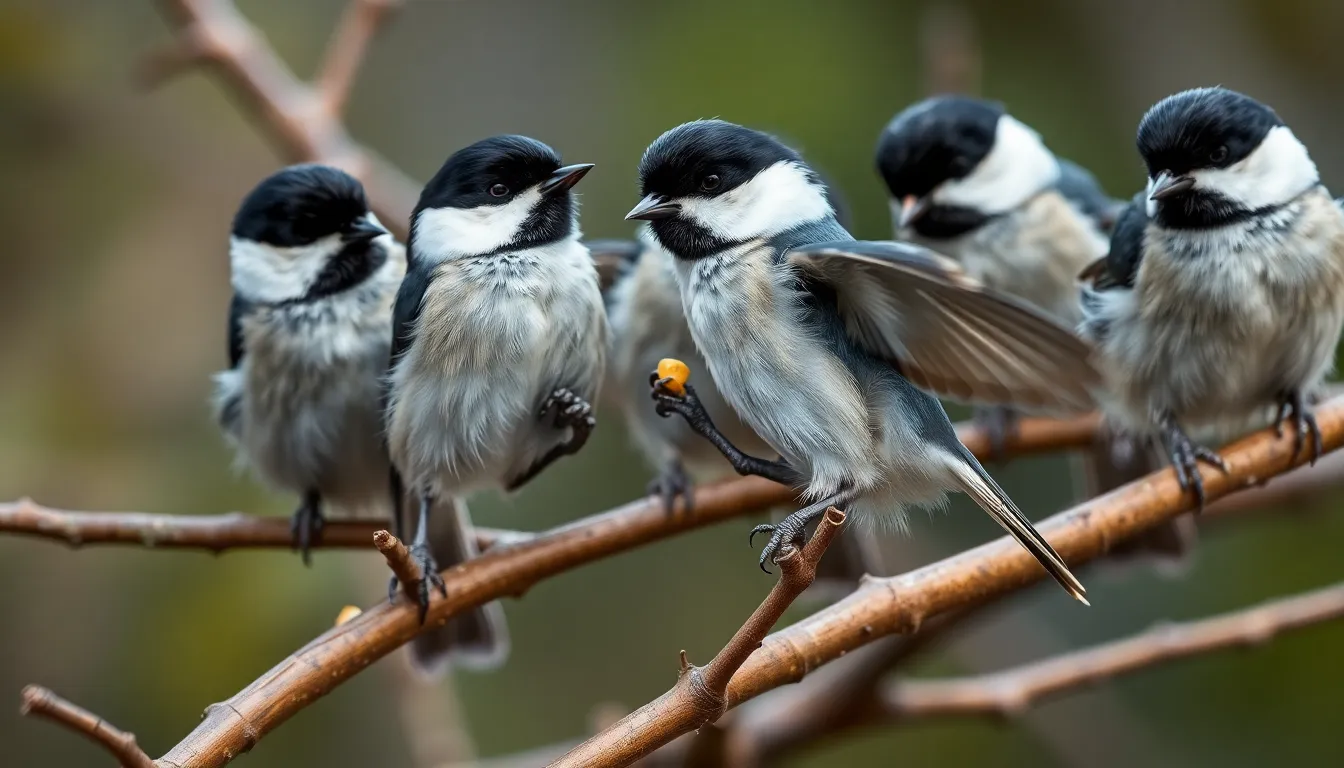Chickadees are charming little birds known for their distinctive calls and playful nature. These small, social creatures often capture the hearts of bird watchers and nature enthusiasts alike. But beyond their delightful chirps and acrobatic antics lies a fascinating aspect of their lives—relationships.
When it comes to chickadees, many wonder about their mating habits and the roles of their partners. Who is the chickadee’s husband? Understanding the dynamics of these avian partnerships reveals much about their behavior and survival strategies. Dive into the world of chickadees and discover the intriguing details of their romantic lives and the bonds they form during the breeding season.
Table of Contents
ToggleWho Is Chickadees’ Husband?
Chickadees, particularly the Black-capped Chickadee, often form strong pair bonds during the breeding season. A male chickadee’s primary role involves courtship and the defense of territory. During this time, he performs various displays to attract a female. This includes vocalizing distinctive “fee-bee” calls and engaging in playful behaviors.
The male chickadee actively participates in nest building. He gathers materials and offers food to the female, which solidifies their pair bond. After mating, both partners participate in incubating eggs and rearing the young. These partnerships may last for one breeding season or longer, depending on environmental factors and individual circumstances.
Chickadees’ strong social structures contribute to their success in various habitats. Their adaptability in forming these relationships plays a significant role in their survival, especially during times of food scarcity.
Overall, the male chickadee acts as a devoted partner, showcasing behaviors vital for the continuation of their lineage and the nurturing of the next generation.
The Life and Habits of Chickadees

Chickadees exhibit fascinating social dynamics and engaging mating practices. Their life and habits illustrate the importance of cooperation and strong social bonds within their groups.
Social Structure of Chickadee Groups
Chickadees often form small, cohesive groups, known as flocks, consisting of up to 12 members. Flocks maintain a hierarchy, with dominant individuals leading foraging activities. They communicate using a range of vocalizations, including distinct “chick-a-dee” calls that signal various threats or alert group members about food sources. Individuals within a flock benefit from collective vigilance, which enhances their protection from predators. Preference for non-competitive relationships allows them to prioritize social bonds, facilitating cooperative behaviors that contribute to their survival during resource shortages.
Mating Rituals and Behaviors
Chickadees engage in elaborate mating rituals that strengthen pair bonds. During courtship, males perform vocal displays, using melodious calls to attract females while fluttering their wings and presenting food offerings. Pair bonding often begins in late winter when males claim territories and establish connections through song. Once paired, both partners participate in nest building, choosing sites in tree cavities or artificial nest boxes. Incubation duties involve alternating shifts, ensuring warmth and protection for the eggs. After hatching, both parents feed and nurture the chicks, demonstrating strong cooperative parenting. These lasting partnerships often extend beyond a single breeding season, adapting to environmental challenges while enhancing their offspring’s survival.
Identifying the Chickadee Species
Identifying chickadee species involves recognizing key characteristics. The two most common species in North America are the Black-capped Chickadee and the Carolina Chickadee, each with distinct traits.
Differences Between Black-Capped and Carolina Chickadees
- Physical Characteristics: Black-capped Chickadees (Poecile atricapillus) display a black cap and throat, white cheeks, and grayish wings and back. Carolina Chickadees (Poecile carolinensis) also have a black cap and throat but feature a more pronounced gray or buff color on their flanks, with a slightly shorter and rounder tail.
- Vocalizations: Black-capped Chickadees produce a distinctive song that sounds like “fee-bee,” with variations in intensity and pitch. Carolina Chickadees emit a similar sound, but their calls often include a more pronounced “chick-a-dee-dee-dee” phrase that varies in complexity, reflecting their social interactions.
- Habitat Preferences: Black-capped Chickadees thrive in northern forests, attracting birders in a variety of habitats including deciduous and mixed woodlands. Carolina Chickadees favor the southeastern United States, frequenting deciduous forests and urban environments, often appearing in backyard feeders.
- Behavior Patterns: Black-capped Chickadees often form larger flocks outside of breeding season, utilizing social hierarchies for foraging. Carolina Chickadees tend to display more territorial behavior throughout the year, engaging more actively in vocalizations to assert dominance within their range.
Recognizing these differences enhances the understanding of chickadee behavior and ecology, contributing to effective birdwatching practices and ecological conservation efforts.
The Role of the Male in Chickadee Families
In chickadee families, the male plays a crucial role in nurturing and protecting their young. His contributions greatly enhance the survival of the offspring and strengthen the pair bond with his mate.
Parental Care and Responsibilities
Males participate actively in all stages of parental care. They help build nests, often choosing tree cavities or abandoned woodpecker holes for this purpose. Males provide food for the female during incubation, ensuring she remains nourished while sitting on the eggs. This support continues once the chicks hatch, as males fetch insects and seeds to feed the young.
Both partners share the responsibility of incubating eggs, typically laying 3 to 8 eggs per clutch. Males often defend the nesting site from potential threats, including predators and intruders. This territorial behavior protects the female and their developing chicks.
Cooperative parenting is evident as both partners engage in keeping the nest clean and safe. Males frequently vocalize to communicate with their mates, enhancing their collaborative efforts in caring for the brood. Their teamwork significantly boosts the likelihood of chick survival.
Chickadees exhibit remarkable social structures and strong partnerships that enhance their survival. The male’s active role in courtship and parenting not only strengthens the bond with his mate but also ensures the well-being of their offspring. Through cooperative efforts in nest building and feeding, both partners contribute to the success of their family. These dynamics reflect the adaptability and resilience of chickadees in varying environments. Understanding these relationships deepens appreciation for these charming birds and highlights the importance of conserving their habitats.






